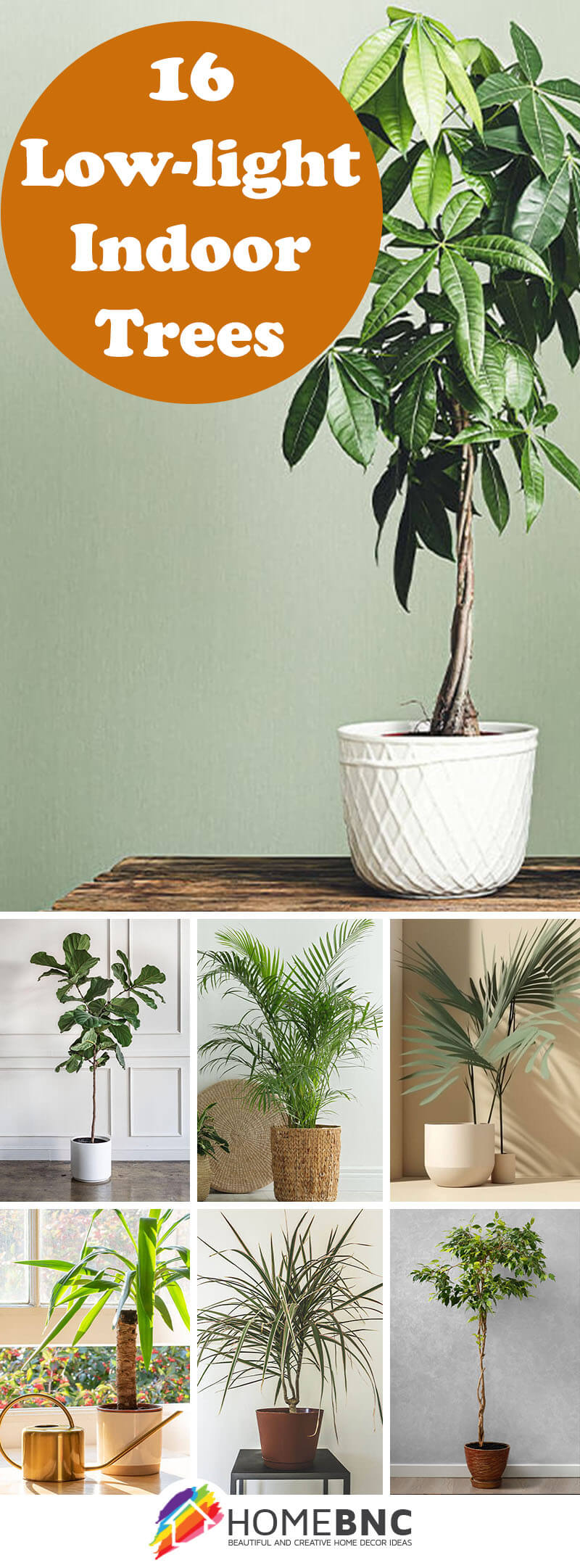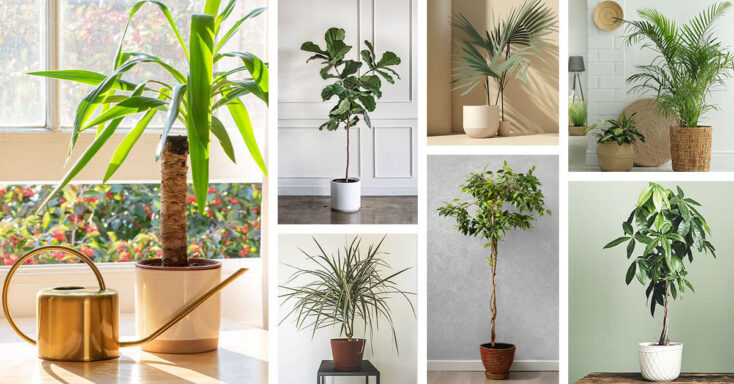Growing an indoor garden is one of the best ways to bring vibrancy to your favorite living spaces. However, cultivating such a garden successfully is easier said than done. Indoor gardeners face several challenges that are not present in outdoor settings. Those challenges include a lack of humidity, limited growing space, and, perhaps most commonly, a lack of sunlight. This article will help you with the latter of those issues by introducing you to a list of the best types of low-light indoor trees that you can grow. Each of these trees is not only adaptable to settings where light exposure is lacking, but they are also incredibly beautiful, as you will soon learn.
Key Takeaways
Each low-light indoor tree will have a unique appearance, a distinct set of growing needs, and a list of reasons why it is worth planting. However, while each of these trees has an individual character, our list also includes a few key takeaways that are applicable to most, if not all, of these tree species. Below are the top five themes you’ll find coming up again and again while you read through our list of the best low-light trees.
- All of the low-light trees on our list are adaptable to containers, meaning that they can grow in indoor spaces.
- Many low-light indoor trees are either palm or ficus varieties.
- Low-light indoor trees rarely grow to the sizes that are common among outdoor trees.
- Although all the trees on our list tolerate low light, some still like more light than others.
- Many low-light indoor trees have fantastic foliage as one of their main ornamental features.
16 Amazing Types of Low-Light Indoor Trees that Make Your Home Look Lush
1. Alii Ficus (Ficus maclellandii)
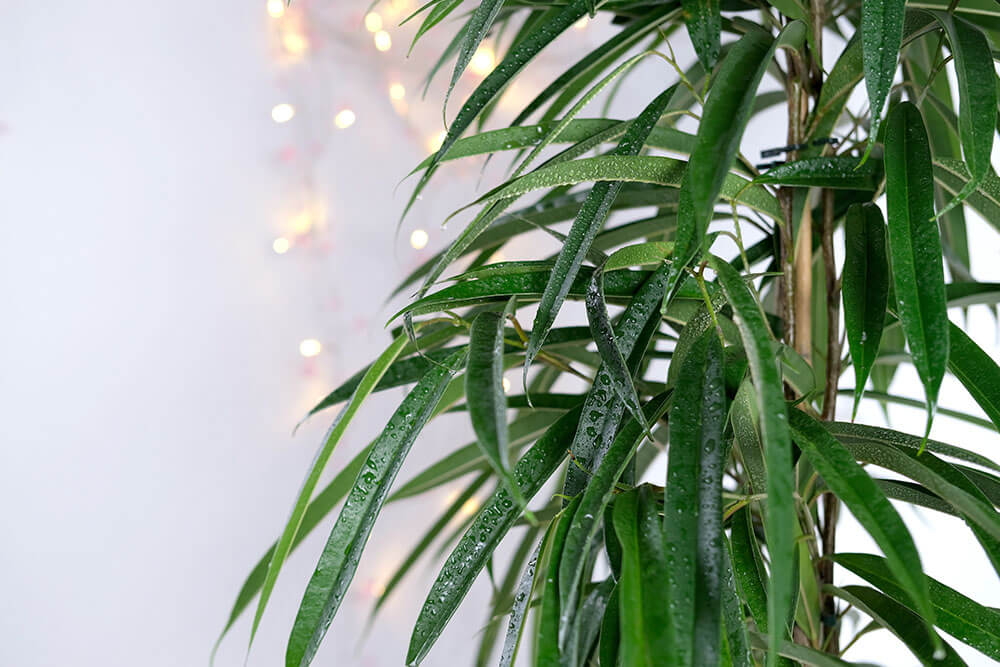
The first entry on our list is a unique species that belongs to the Ficus genus but has a different appearance than most Ficus plants. What makes the Alii ficus different is the appearance of its leaves. The Alii Ficus has long slender leaves that come to a point, which is part of the reason why this plant sometimes goes by the name banana leaf fig. This plant also responds well to pruning, which is why some people trim it into interesting shapes. However, the Alii Ficus will still look amazing even if you don’t have time to prune it regularly.
Remember to give your Alii ficus tree consistent soil moisture, and it may be helpful to mist this plant as well to maintain the moisture it prefers.
2. Bamboo Palm (Dypsis lutescens)

The bamboo palm tree is the first of a few plants on this list that have names that are somewhat misleading. In this case, the bamboo palm tree is not a true bamboo tree at all. Instead, it simply has an appearance that is quite similar to that of bamboo. That appearance includes multiple stems that shoot directly upward from the soil and carry thin foliage. Bamboo palm trees have a fantastic ability to grow in low-light settings, and they have a compact size that makes them quite manageable as well. In most cases, this plant grows to be between four and eight feet tall in indoor settings. For those who live in zone 10 or warmer, you can witness this plant reaching much taller heights as it grows outdoors.
3. Corn Plant (Dracaena fragrans)
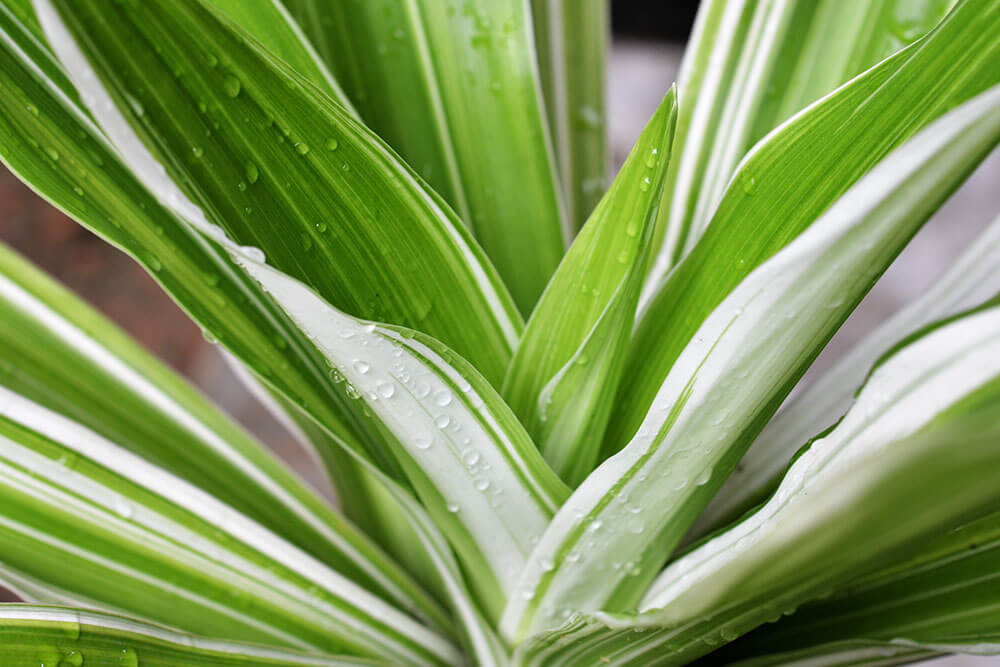
In keeping with the theme we set in the previous entry, this plant is another complete misnomer. As such, you should not expect to have any opportunity to harvest corn when growing the low-light indoor tree known as the corn plant. Instead, corn plants are an ornamental species that grow well in indoor settings thanks to their ability to tolerate a lack of sunlight. These plants have one or more thick main stems that don’t grow to be more than a few feet tall in most scenarios. At the tops of those thick stalks are oval-shaped leaves that often show multiple colors at once. Typically, each leaf is mainly green with streaks of light yellowish green that run through the middle.
4. Fiddle Leaf Fig (Ficus lyrata)
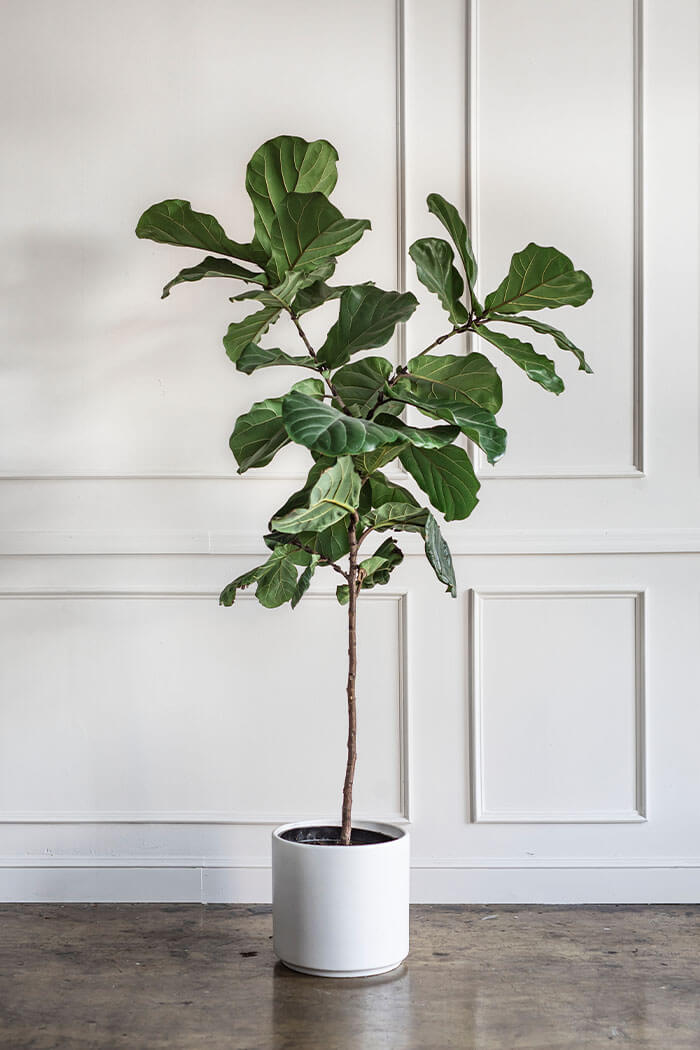
The fiddle leaf fig is one of the most popular and commonly-grown indoor trees in the United States, partially due to this plant’s ability to survive even when it grows in areas that don’t receive much light on a daily basis. You’ll be able to recognize a fiddle leaf fig immediately, thanks to its leaves. Each leaf is quite large, at times reaching more than a foot long, with a loose oval shape and a wavy margin. But even though the leaves of this plant are large, the plant itself is not. In most settings, a fiddle leaf fig will develop with a single main trunk that is relatively thin and reaches just a few feet tall, assuming you are growing it indoors.
5. Hawaiian Umbrella Tree (Schefflera arboricola)
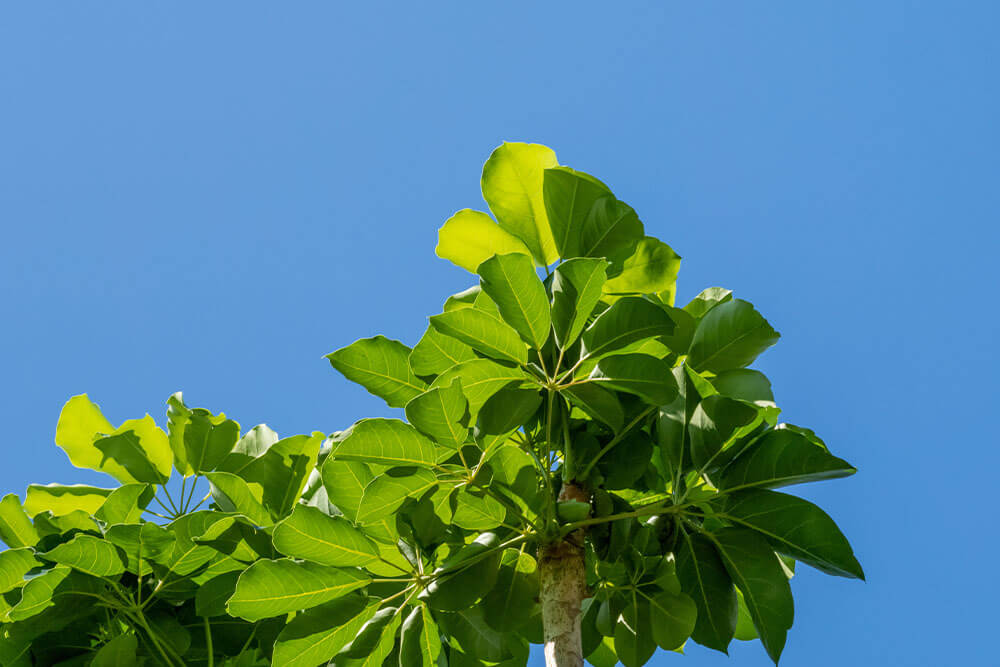
The Hawaiian umbrella tree is another indoor tree with interesting foliage. At the end of the branches, the leaves assemble themselves in a radial pattern, and each one has a slightly drooping shape that creates an umbrella-like form. Before planting this tree, you should understand the conditions it requires to remain healthy. Mainly, a Hawaiian umbrella tree loves to have consistent moisture, which can be difficult to maintain in indoor settings, especially during the winter months when heaters are in full operation. To combat the dry settings that are present indoors, it is best to mist this plant regularly. What’s even more important is keeping up with watering to ensure that the soil maintains a consistent moisture level.
6. Kentia Palm Tree (Howea forsteriana)
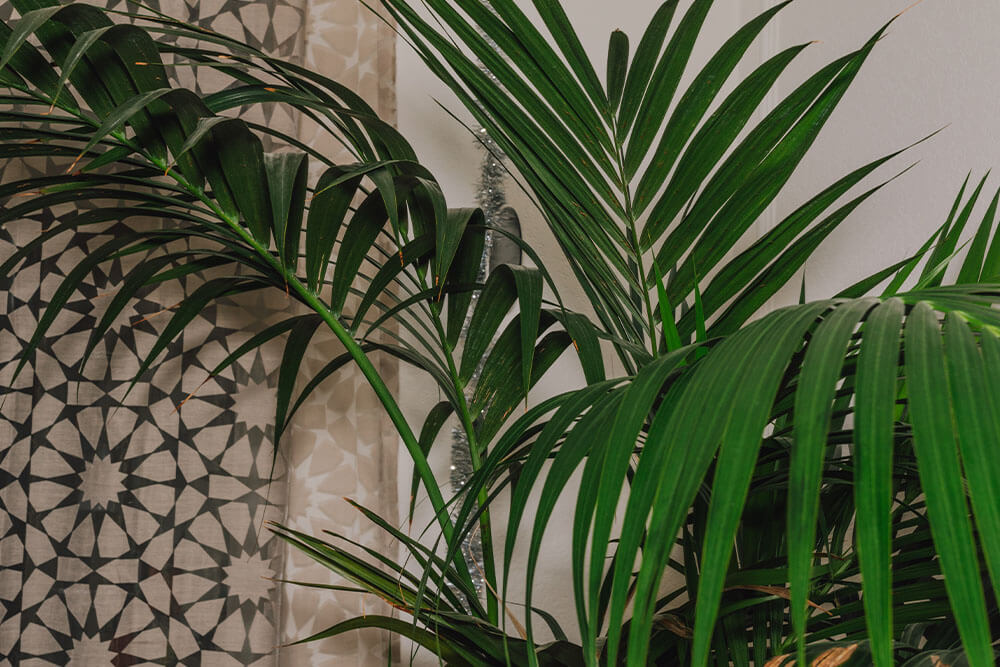
Here we have another palm tree variety that is perfect for growing in indoor locations that don’t receive a lot of light. In this case, the Kentia palm tree is a species that comes from Australia and can reach incredible heights of 50 feet tall or more when growing outdoors. However, when growing the Kentia palm tree indoors, you can expect it to be much smaller. The best part about the Kentia palm tree is that it is very easy to care for once it has established itself in its new growing location. What that means is that you get to enjoy the long feathery leaves of the Kentia palm tree even if you don’t have time to keep up with an extensive maintenance routine.
7. Lady Palm (Rhapis excelsa)
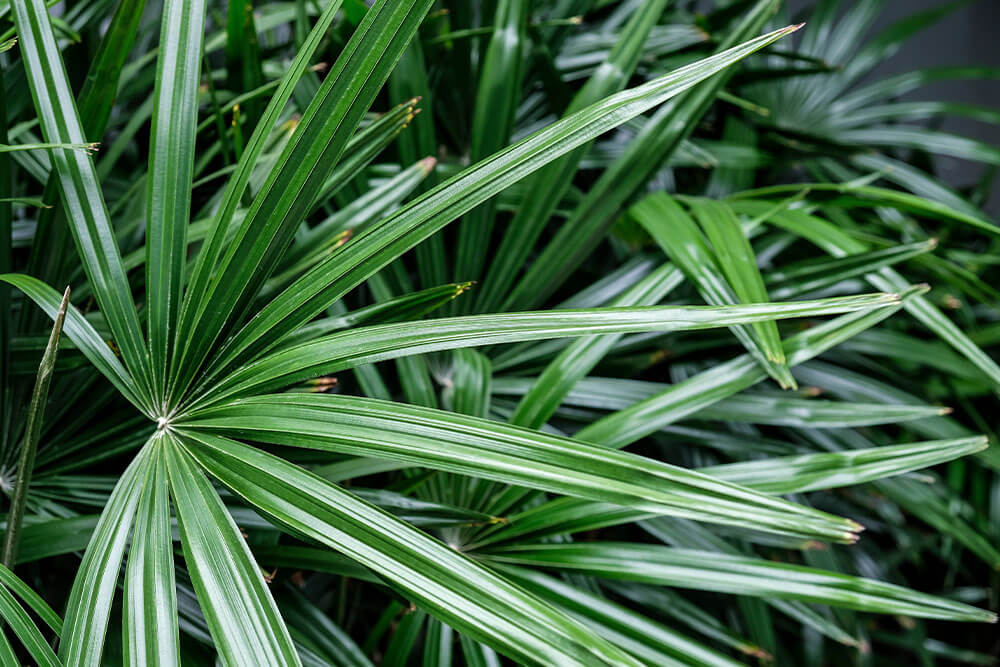
Unlike other trees on this list, many of which grow with one or just a few main stems, the lady palm tree is a multi-stemmed plant that will create dense clusters of shoots as it develops. Those shoots hold leaves that are at least a few inches across and about a foot long at times, which is why people sometimes call this plant the broad-leaved palm or the broad-leaved lady palm. In most cases, the lady palm will be about 4 to 5 feet tall at maturity. However, it takes a while for this plant to reach that mature size because it has a slow growth habit. Still, that slow growth is a benefit for indoor growing areas that have minimal growing space, as you won’t need to worry about the lady palm expanding beyond its designated growing area.
8. Madagasgar Dragon Tree (Dracaena marginata)
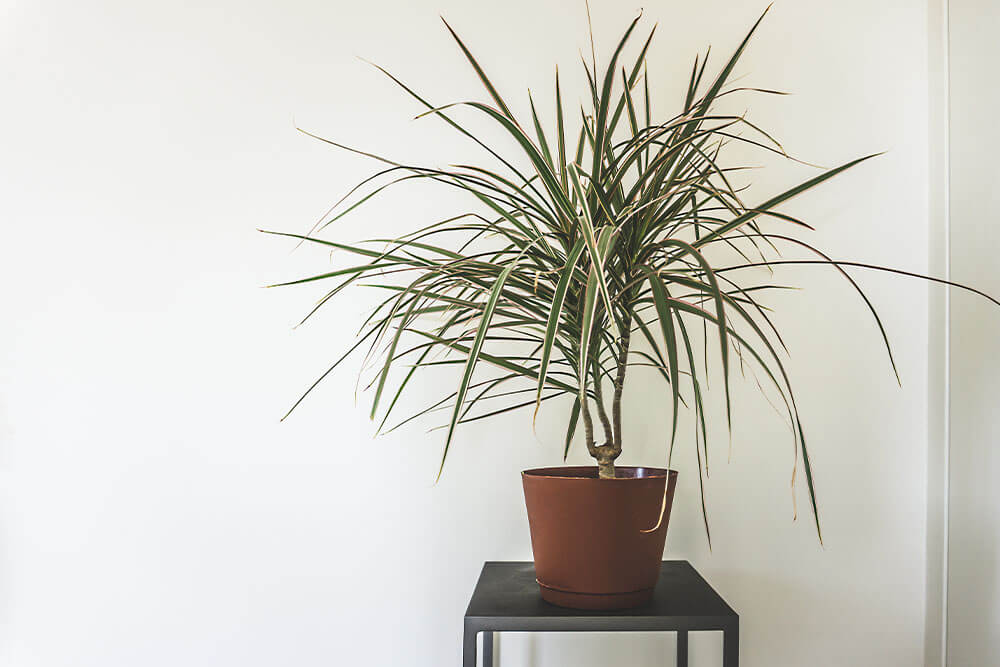
There are two main reasons why the Madagascar dragon tree has become an incredibly sought-after houseplant. The first is that the Madagascar dragon tree has an appearance that is as interesting as its name. That appearance consists of a clump of slender foliage that creates a spiky mass of vegetation and sits atop a light grey trunk. The other reason for this plant’s popularity is that it is more tolerant of a subpar maintenance routine than other plants. That beauty and ease of care are what have made the Madagascar dragon tree a go-to option for beginner indoor gardeners.
9. Majesty Palm (Ravenea revularis)
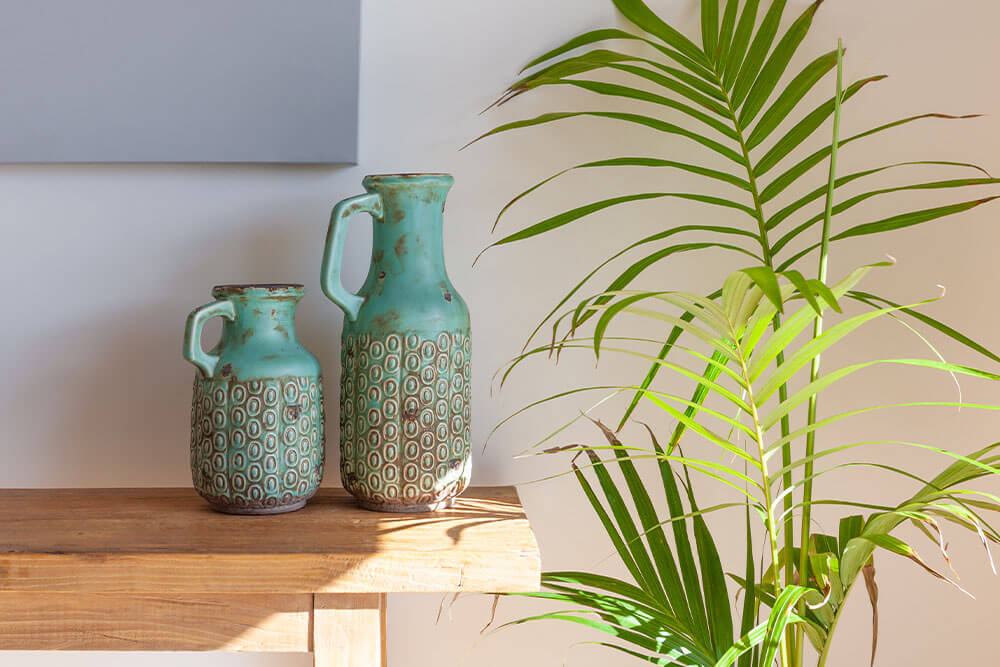
Many palm tree varieties come with either fan-shaped fonds or long fronds with many slender leaflets. The majesty palm belongs to the latter category. This tree’s fronds are elongated and slightly arched and emerge from a single center point where the plant grows out from the ground. If you are familiar with this plant in wild settings, then you know that it can reach incredible heights of 100 feet tall or more. However, as is true regarding many of the plants on this list, the indoor version of the majesty palm is much smaller since it will need to grow in a container, which makes it incredibly easy to maintain in your home.
10. Money Tree (Pachira aquatica)
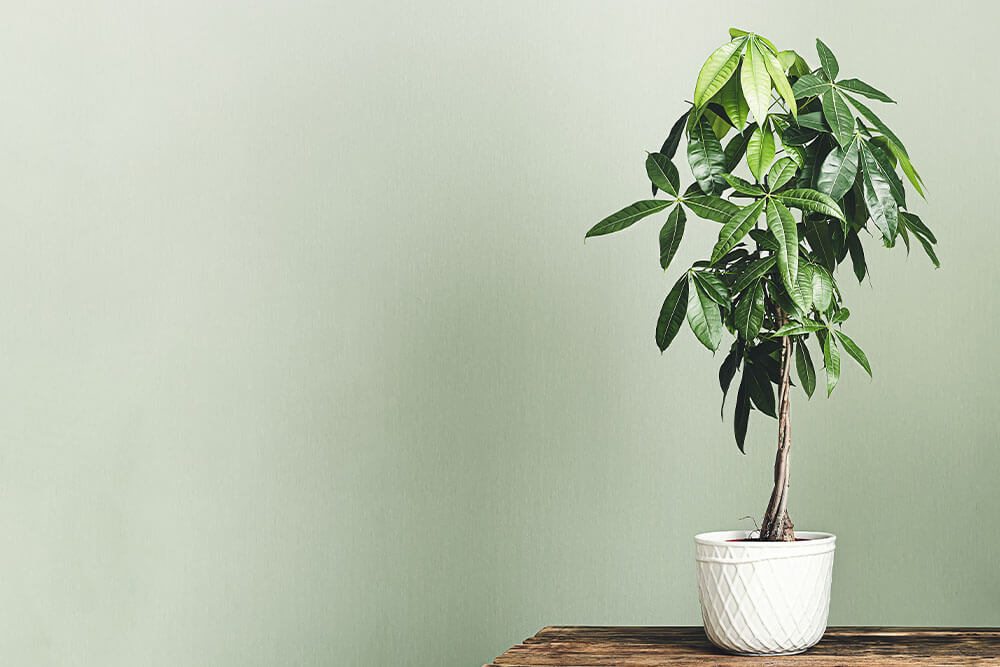
The money tree is a perfect example of a plant that not only prefers low-light settings but simply cannot survive in indoor locations that receive full sun. In fact, if you place your money tree in a location that experiences direct sunlight, you should expect to see the lush leaves of this plant losing their color and appearing unhealthy. When in low light, the foliage will have a rich green color, and the trunk of this plant can be incredibly ornamentally valuable as well. One of the best ways to show off the trunk is to train it into a braided shape, starting when the plant is young. That braided trunk, along with the lovely leaves, will make for a visual impression that few other plants can match.
11. Norfolk Island Pine Tree (Araucaria heterophylla)
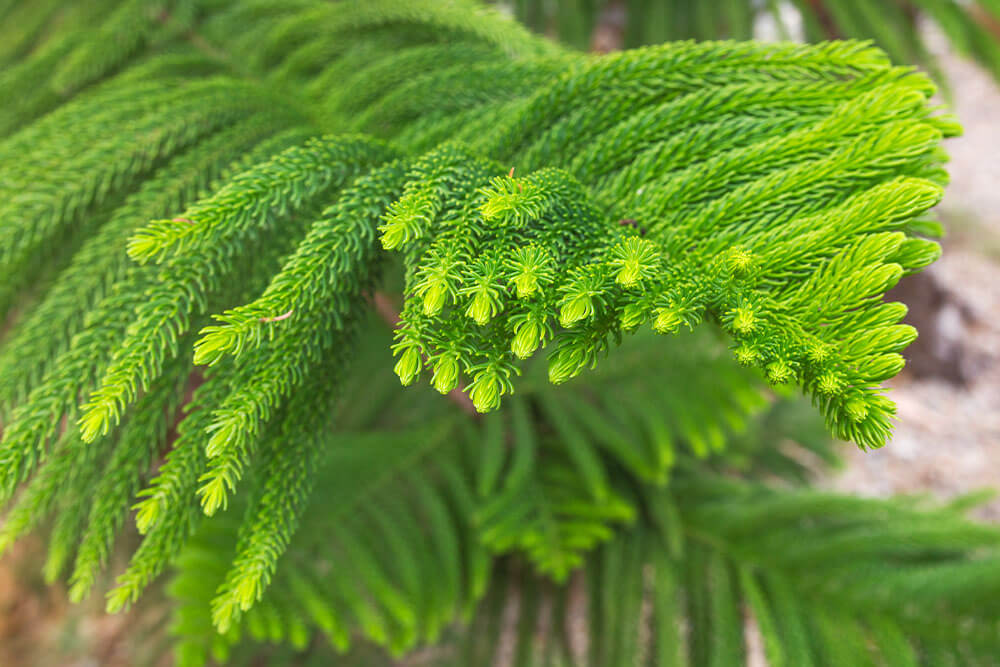
While there are plenty of palm and ficus tree varieties on this list, don’t make the mistake of believing that all viable low-light indoor plants come from those specific plant groups. For instance, this entry, the Norfolk Island pine tree, offers something new for those who are seeking a unique indoor plant option. The Norfolk Island pine tree has light green foliage, some of which almost have a lime green color. This plant also has an interesting growth habit that includes multiple slender stems that grow vertically. The foliage of this plant consists of evergreen needles that appear in tiered levels from the bottom of the plant to the top.
12. Parlor Palm (Chamaedorea elegans)
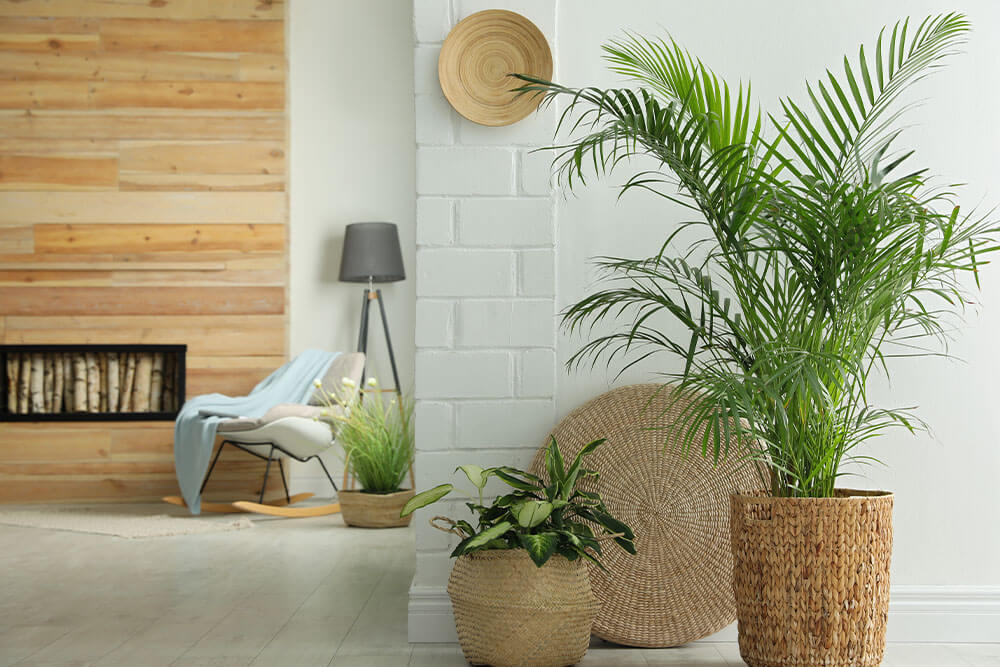
Here we have another one of the most popular indoor plants that you can own. In fact, this plant gets its common name from the fact that it grows so often in indoor settings. The parlor palm tree comes with a dense set of thin foliage, and when it is young, it is small enough to not only grow indoors but also live in smaller growing areas, such as on top of desks, coffee tables, and mantle pieces. To give this plant the best chance of success, keep it away from direct sunlight and make sure that you grow it in well-draining soil while also watering it regularly. Appling a liquid-based fertilizer can also help the parlor palm tree thrive, but this plant will maintain a slow to moderate growth habit whether you fertilize it or not.
13. Rubber Tree (Ficus elastica)
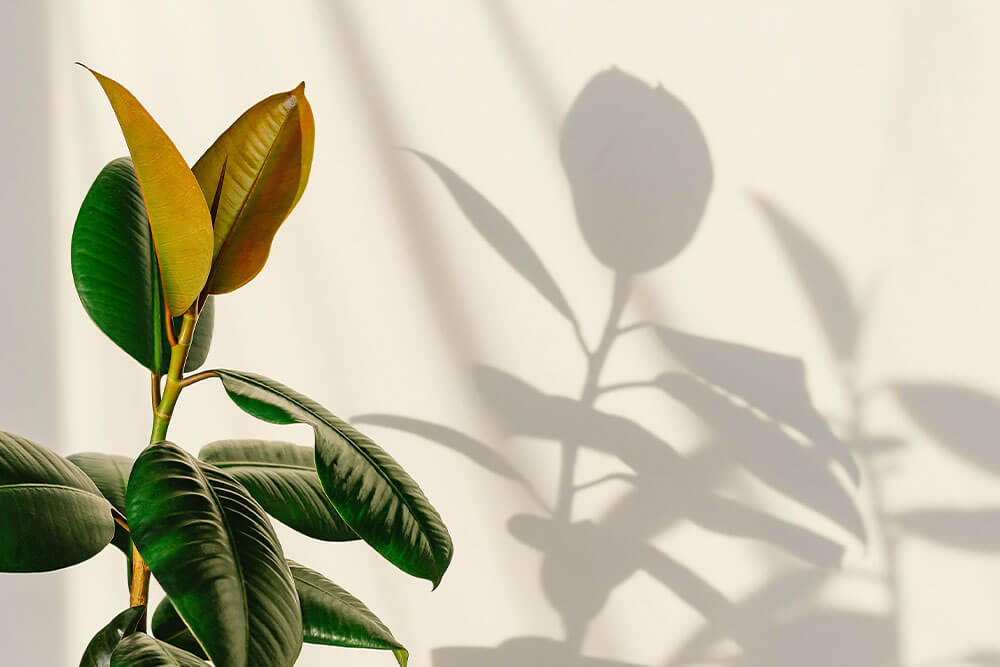
The rubber tree, or Ficus elastica, is an interesting species that comes from regions in Asia. As the name implies, the rubber tree and its close relatives are responsible for providing the sap that is a raw ingredient in rubber materials. However, despite that incredible commercial value, you will more likely find the rubber tree growing in people’s houses. This plant develops leaves that are large and have a nearly perfect oval shape. These leaves also hold an incredibly lustrous glow that gives them a very appealing texture. Additionally, and unlike most other indoor plants, rubber trees are somewhat tolerant of the dry air present in indoor settings, which means they likely won’t need to mist this plant or run a humidifier to keep it happy.
14. Spineless Yucca (Yucca elephantipes)

Unlike other plants that have the yucca name, the spineless yucca is a bit more approachable and easy to interact with. The reason for that is that the spineless yucca plant has soft leaves that flex and bend when you touch them, unlike the sharp spiky foliage common to other yucca plants. Those leaves arrange themselves in an irregular cluster at the top of the plant and stand on top of a thick main stem. Amazingly, the spineless yucca plant is incredibly adaptable. It tolerates colder temperatures than most other plants on this list, and it can adapt to many different types of soil. For instance, a spineless yucca tree will be equally healthy when growing in acidic, neutral, or alkaline soil. It can also survive in sandy soils and may even prefer those conditions in many cases.
15. Soft Tree Fern (Dicksonia antarctica)
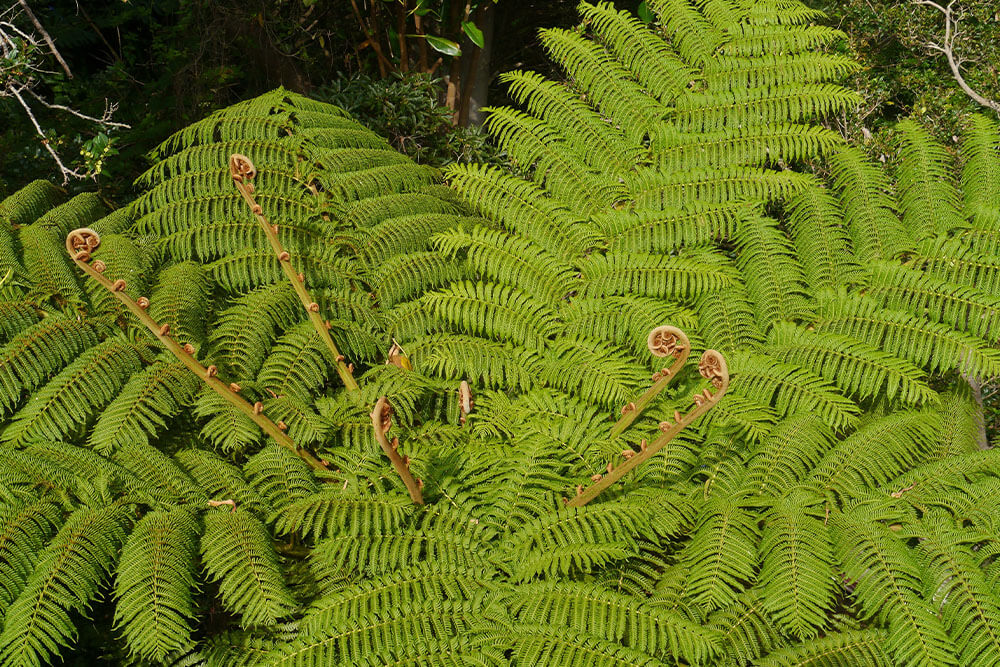
If you are familiar with the types of ferns that are most common in the United States, then you might be surprised to see a fern variety on this list of low-light indoor trees. However, despite what you may be used to, the soft tree fern, also called man fern, is a plant that grows as a tree rather than as an herbaceous plant. Still, even though the soft tree fern is a tree, it continues to hold the fern fronds that are quite similar to those you are likely familiar with. Overall, the soft tree fern is another plant that grows slowly, which only adds to its value and ease of care when growing it indoors.
16. Weeping Fig (Ficus benjamina)
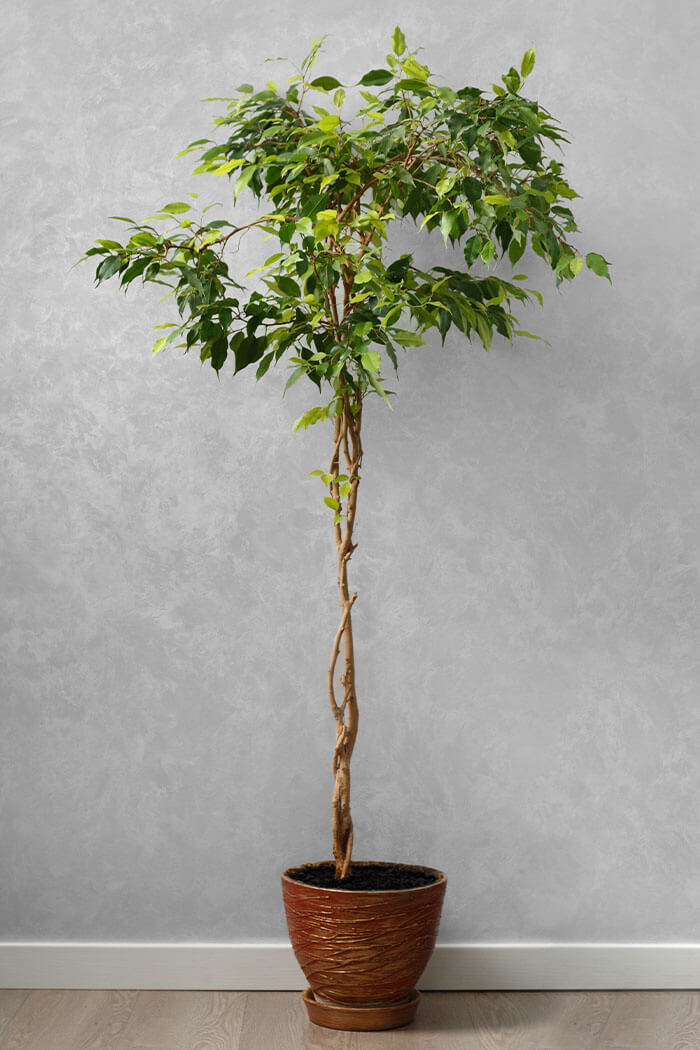
We’ll finish off our list with one of the most impressive low-light indoor trees that you can grow. The weeping fig tree is a type of ficus that is sure to catch your eye. It has beautiful glossy green leaves that attach themselves to stems and branches that droop slightly to give the plant a weeping growth habit. What makes this plant’s appearance even more incredible is the fact that you can train the stems of this plant into a braided shape, which, combined with the unique canopy growth habit, makes for a unique tree that will be the center of attention no matter where you plant it in your home.
After first learning about trees that grow in low-light indoor settings, it is common for people to have at least a few questions. These questions range from inquiries about which trees are best for low light to considerations about how best to care for these plants. If you have questions related to those topics, read on through the next few sections to learn more.
Frequently Asked Questions About Low-Light Indoor Trees
What Plants Grow Best Indoors in Low Light?
When searching for trees that grow in low-light indoor settings, it is best to review each plant’s growth requirements before you select the one that is right for you. The plants that grow best indoors are the ones that call for partial shade, full shade, or an indirect light source. Fortunately, there are plenty of plants that are suitable for indoor growth and have a specific preference for low-light exposure. By contrast, plants that call for full sunlight exposure are not suitable for the same growing areas since they will rarely receive the light they need while living indoors.
What is the Most Low-Maintenance Indoor Tree?
There are many trees that do not require much maintenance to survive indoors. These plants generally require a low amount of light, minimal pruning, and an average amount of supplemental watering. After these plants find advantageous growing conditions, they will adapt quickly and won’t need much attention. Indoor palm trees, which come in many varieties, are often some of the easiest to care for, even if you are not an experienced gardener. Additionally, the many ficus trees that grow indoors are also low-maintenance plants in most cases.
Can a Ficus Grow in Low Light?
There are several types of ficus plants that can grow in low-light indoor settings. The Alii ficus, fiddle leaf ficus, and the rubber tree, which belongs to the Ficus genus, are all examples of ficus plants that can grow in low light. Additionally, since the Ficus genus offers so many plant options, you will likely be able to find more plants that can survive similarly in low-light indoor environments.
What Plants Don’t Need Direct Sunlight?
Plenty of plants exist that do not need direct sunlight, and these plants tend to be the best options for low-light indoor settings. If you take time to review the growing needs of different indoor plant options, it will quickly become apparent which plants can survive without direct sunlight and which cannot. It is safe to assume that any plant that requires full sunlight, and many that prefer partial shade, will not survive without direct light. However, plants that like indirect light are ideal options when direct sunlight is not available.
How Do You Keep Plants Alive in a Low-Light Room?
There are a few tips that you should keep in mind to help your plants thrive indoors, even if you don’t receive much light in your growing area. One of the best tips we can give is to make sure your plants receive the moisture they need. This means watering regularly but also misting or running a humidifier for plants that prefer to have moisture in the air where they live. Other than that, keeping up with pruning, fertilization, and any other basic maintenance tasks will go a long way toward keeping your plants alive in a low-light room.
16 Easy Types of Low-Light Indoor Trees that Don’t Need Much Maintenance
Reading through our list should prove to you that finding indoor trees that can not only survive but also thrive in low-light settings is not as difficult as it first seems. Our collection of low-light indoor trees includes plenty of beautiful species that are both a joy to behold and relatively easy to care for. As such, if you find yourself struggling to fill an indoor garden space in your home due to its lack of sun exposure, referring to our list above is the best way to start the plant selection process.
